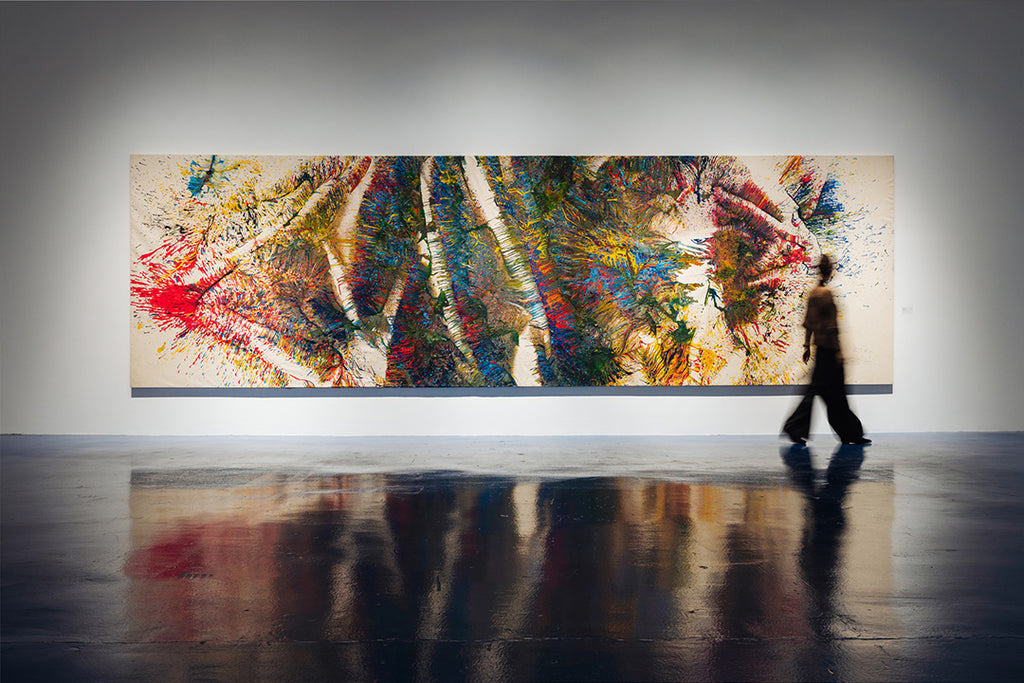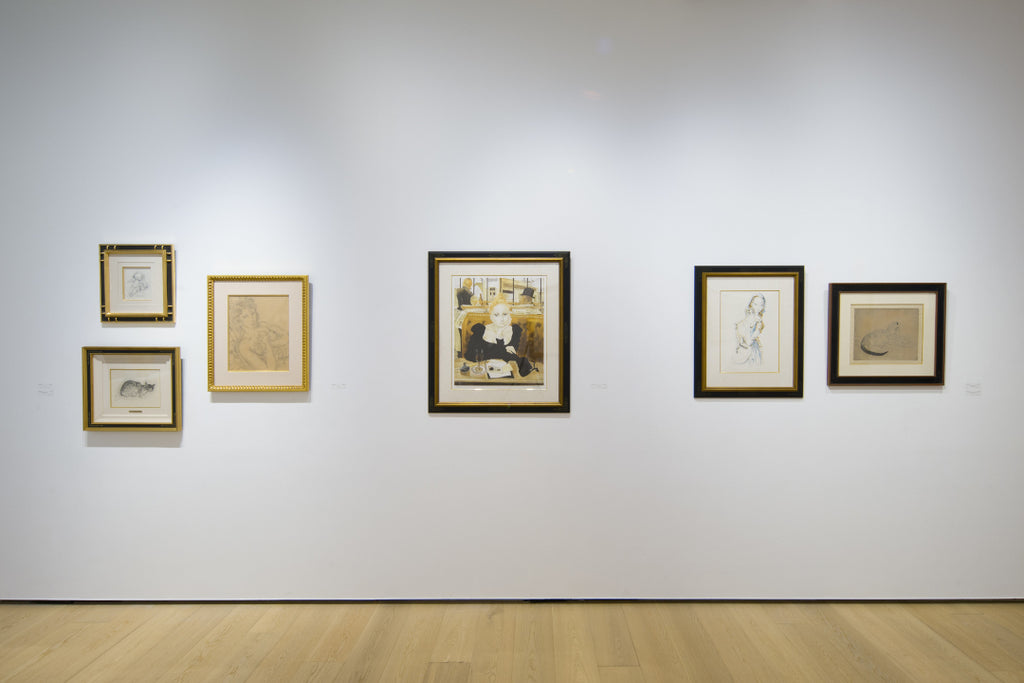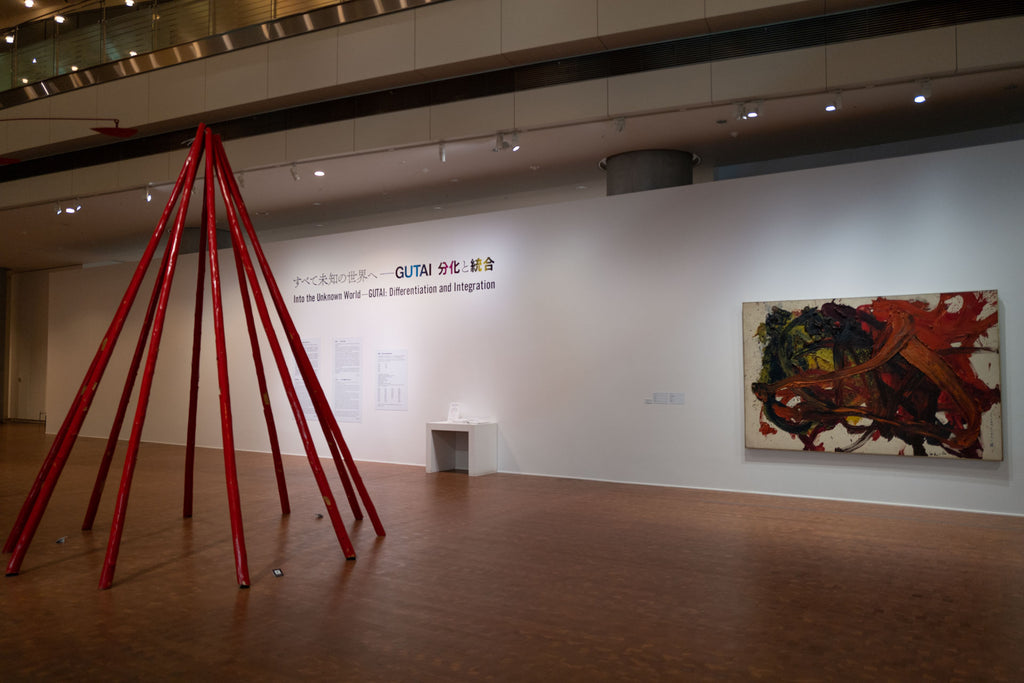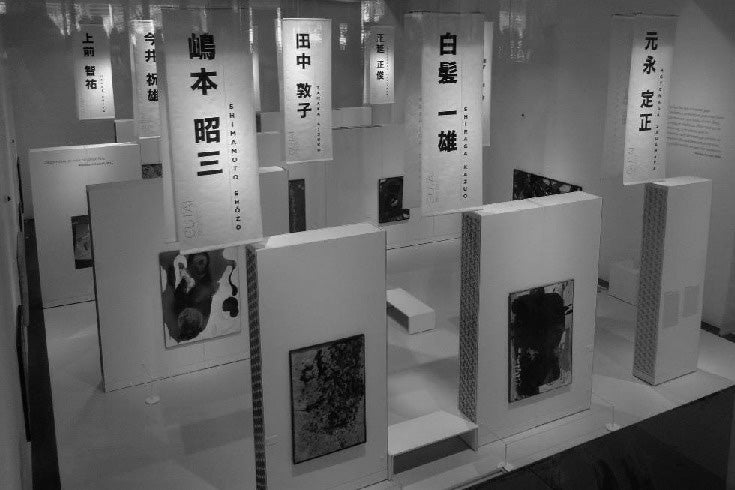ARTICLES
The Gentle Genius Artist: Shozo Shimamoto's Charm as a Human Being
GUTAI STILL ALIVE 2015 vol.1
18/35

A project evolving the digitized archive of the book, “GUTAI STILL ALIVE 2015 vol.1”. The 18th edition features Shozo Shimamoto, one of the central members of the Gutai Art Association who passed away in 2013 at the age of 85. Shimamoto dedicated his whole life to art, arranging performances even at the tail end of his life. We explore a more personal side to his life through interviews with his family and staff members.
An Artist of Kind Genius The Human Appeal of Shozo Shimamoto
The figure of art who continued to plan his performances to his final day
On 25th January 2013, at the age of 85, Shozo Shimamoto passed away due to a cardiac arrest, but even on the morning of this day he was engaged in a meeting planning for his next performance. Tirelessly active internationally, his work continued to be featured across the world in the same year of his death, with a major retrospective being held in Milan, Italy, through to January 2014. Shimamoto had continued to work as one of the most vigorous artists of the Gutai movement.
Even now after his death, staff at his studio “Shimamoto Lab”, in Koshienguchi, Nishinomiya, continue to work devotedly upon ongoing projects. Here Shimamoto’s oldest son, the musician and Osaka Art University professor Takayuki Shimamoto and his wife, along with former staff member Sumiko Kon were met with, while Andrea Mardegan, international promoter of Shimamoto’s work also shared his reflections in Moriya, Ibaraki.
On 25th April 2012 the Karuizawa New Art Museum presented Shimamoto’s glass throwing performance as part of their anniversary celebrations. This performance work of one of key founding members of the Gutai movement could still be witnessed less than a year before his death. Ultimately this performance would prove to be his last but Shimamoto and his staff had still been planning even further sequels.
Takayuki’s wife Hitomi speaks of the last day of Shimamoto’s life.
“On that day (25th January) Shimamoto had been in hospital so all the staff had gone to see him in the morning and after this they gathered for a meeting in the studio at lunch time. They spoke of the kind of places which might be suitable for his performance and suggested it would give Shimamoto new strength if they could realize a performance together. Just after this there was an emergency call from the hospital so we were all very shocked.”
Thinking of the development of his performance work into his last hours is emblematic of Shimamoto’s very way of life. His son, and now leader of Shimamoto Lab, talks of life with his father: “I had no impression of him as an ordinary father. I have no memory of playing together. Rather he has influenced me in many things as an artist. While we worked across separate media of music and visual art, the principles of abstraction and happenings have become important elements in my own work. But it was only later in life when I truly recognized my father for the artist he was. It was when I travelled to New York and began to collaborate with many other artists and had the opportunity to perform in galleries that this comprehension came to me. I must have been about 30. If I hadn’t gone to New York I would probably have never realized. I realized my father had something he wanted to express himself in his own language. Once I recognized my father as an artist we started to enter into many collaborations.
“Whether it be art or music, work which captures the age is always given praise. But there is a very thin line between good and bad. You have to precariously live upon this paper thin line and if you do not have a strong belief in yourself then you can not do it. Every artist has their weak point but I think it is all to do with how far your belief can take you. In this way my father was an ardent believer, anything he thought of he was determined to carry through.”
For Takayuki his image of his father was bound to his life as an artist. It was to that extent that life and art were tied together in Shimamoto.
Sumiko Kon who assisted Shimamoto 30 years ago speaks of his way of working.
“From the very moment he awoke each day, 365 days a year Shimamoto thought about nothing else but art. He never took a break from his work, and would not even go to the cinema to relax. If he went to see a movie it was not because it was popular at the time, it was because it was interesting as art. He would wake everyday at 3am. Until 6am he would finish the things he had to do for the day then he would go for a walk and return for breakfast. Then he would think what he wanted to do that day. There were so many things he wanted to do there just wasn’t enough time. He was also doing mail art at the time and had to check on all the mail that came through for example.”
Shimamoto continued his rhythm of early rising up until his last years. Perhaps his endless pursuit of new expression and ongoing exhibition of such diverse works were enabled by this very way of life.
“He would go to bed at 8pm so he never went to any parties, he didn’t smoke, he didn’t drink. For my father there was nothing so important that it could break this rhythm. Even when he went abroad he would go to bed early.” (Takayuki)
“He was really someone with such wide talent. If he held a pen he could write such great texts. He wrote books too of course but they must have all been written in the morning while his mind was still fresh. He never did anything by halves. Even one time he said to me ‘I’m sorry I am not just an ordinary old man’. There was a certain line which the family could not cross, we were all kept at the same distance. He once said “I know its hard on you” but no one in the family wanted him to be an ordinary old man, for the children this unique character was their grandfather, and for me I too couldn’t imagine him as a normal father in law.” (Hitomi)
We may see here how the understanding of Shimamoto’s family and staff also offered key support in his continuing creative practice.
“Everyday he was so busy, but despite this he would always take trouble over people. Even at the very initiation of Gutai there must have been an awful lot of running about but without Shimamoto I doubt if they would have pulled things together. The Shimamoto Lab was also always filled with young artists he was encouraging” comments Hitomi.
There were many who felt the human warmth of Shozo Shimamoto, not least the Italian Andrea Mardegan, a figure who has done much to promote Shimamoto’s work abroad and whose first encounter with Shimamoto was most interesting. Planning to become a doctor Andrea had interned in a hospital, but he had some question towards the attitude of the doctors. Attempting to escape some of the stress he made a trip to Venice and here met with the staff supporting Shimamoto’s exhibition in the Venice Biennale’s “Extra 50”. Having studied Japanese as a hobby Mardegan tested out his language skill by approaching him. And it was from this first encounter that Mardegan came to Japan. He arrived at the airport in the Summer of 2003, but when the staff allocated to collect him was suddenly unable to make it, it was Shimamoto himself who went to welcome Mardegan.
“In the airport I was still feeling uncertain with my Japanese. I had been told that there would be someone coming to meet me at the airport, but when I arrived it was to see Shimamoto himself. I was so surprised. To come all this way to welcome some foreigner who had no relationship to him, who could do nothing, who had merely come to Japan for his vacation! I thought to myself “This is no ordinary man” and it was that moment which really inspired me.”
“Originally I thought art was something unnecessary, and put medicine above all else, but while a doctor may heal many bodies, what are they to do if they lose their heart? And if you have to think which is most important, well they both are. And in this way Shimamoto had a side to him which would have made him a doctor. His kindness flowed as if from the heart of a child and still at the age of 70 he maintained this sensibility. To do what you want and not calculate everything around you. That is what doctors have forgotten. They are expert in their field but when taken out of this they are empty. I considered what kind of person I wanted to work for and realized I wanted to put my strength towards someone like Shimamoto.”
Mardegan made this decision after having passed a hospital interview in Japan and committed to working as a researcher. It was a life changing decision in which the power of Shimamoto’s art is undeniable, inspiring a medical researcher to devote his life to art.
“Recently this phrase is used rather too often, but Shimamoto was truly a genius”
His following words were quite impressive:
“I thought why has such a brilliant man been introduced to me rather than someone else. When Shimamoto turned 76 I began to work for him. Shimamoto was also suffering from the lack of understanding of his work. Japanese people don’t think about art for themselves. If someone else says its good then they agree. If you say Picasso everyone nods their head. But in Italy and Europe you see with your own eyes, and decide for yourself if something is good or interesting or not. That is why in Italy Shimamoto is like an artist god.”
In Japan a new appraisal for the work of Gutai is emerging as the international acclaim for this movement rises but the attention paid to the individual practice of each artist still remains low. As Andrea Mardegan comments on the need for more understanding towards this figure who created such diverse works up into his final years, the relative lack of exhibitions of Shimamoto’s work in Japan itself has also become a talking point within Shimamoto Lab. The vast body of work which Shimamoto left behind must surely be paid new respect from now on.
(Mothly Gallery, December 2013)
Read more about the “Gutai Art Association »
*Information in this article is at the time of publication.



